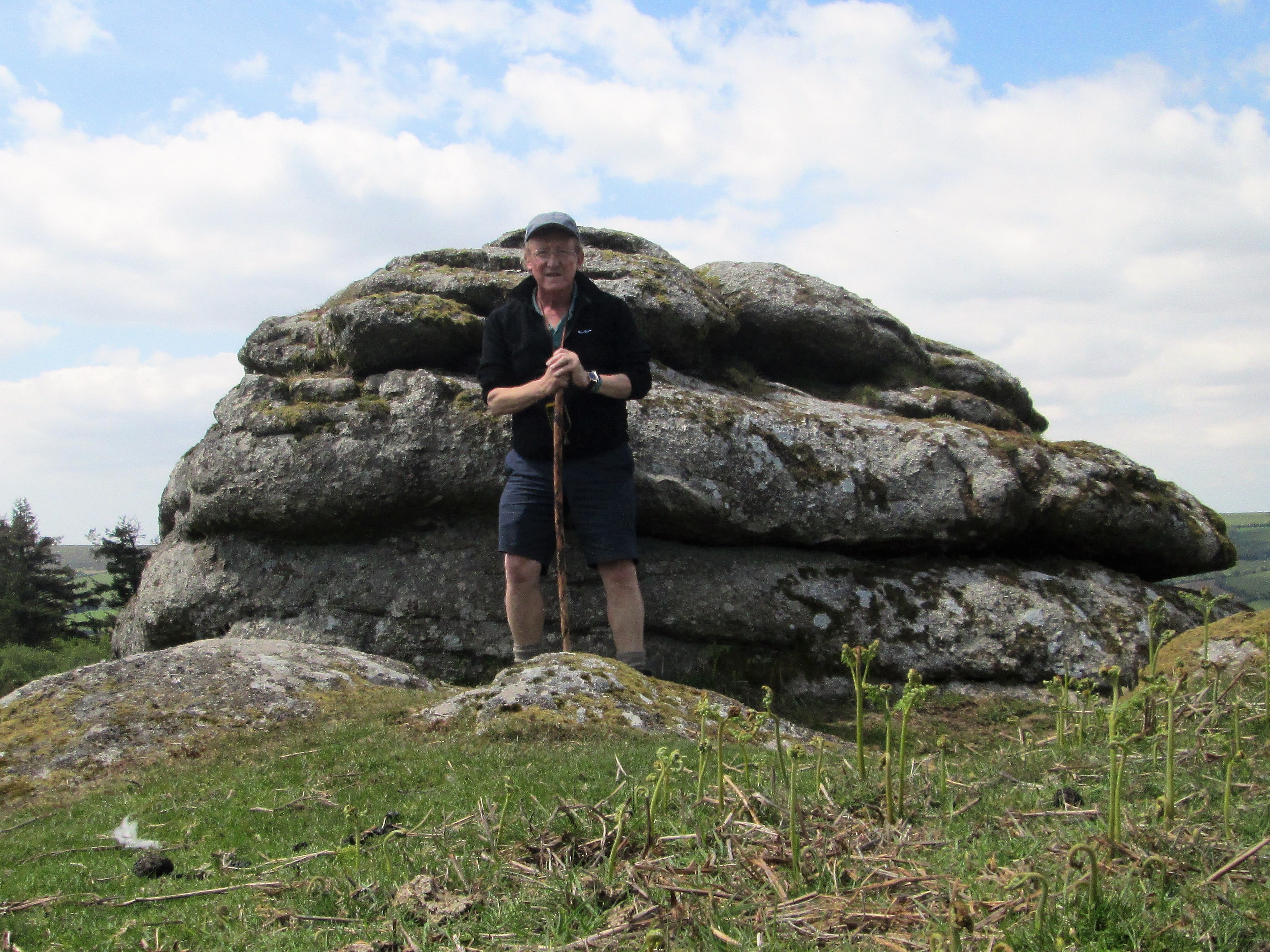An edited version of this article appeared in Dartmoor Magazine – Summer 2019, Issue 135.
In recent years with a little more time to reflect on my earlier excursions to lesser known parts of Dartmoor, I have often had occasion to return to the various commentaries of both William Crossing and Eric Hemery, two of the most noted, widely quoted and celebrated authors on the moorland terrain. For me both writers have been a regular source of inspiration and motivation to walk the moor and explore. That said the greatest challenge and dare I say occasional frustration has come from attempting to decipher some of their descriptions. Whilst Crossing was unable to utilise grid references (GRs) as they were not in public use until at least 1929, a year after his death, the latter scribe simply chose not to use them in his 1983 tome ‘High Dartmoor’.
On page 6 of that work we learn Hemery’s reasons for that decision ‘Map references are not used, being alien to a book of this nature: to explore the context is to appreciate better the centre piece- to sense, in fact, the character of its environment.’ With reference to his musical background he continues ‘Similarly the musical score reader can be given bar references to find particular features in a symphony but heard apart from its context they are only of narrow musicological interest.’
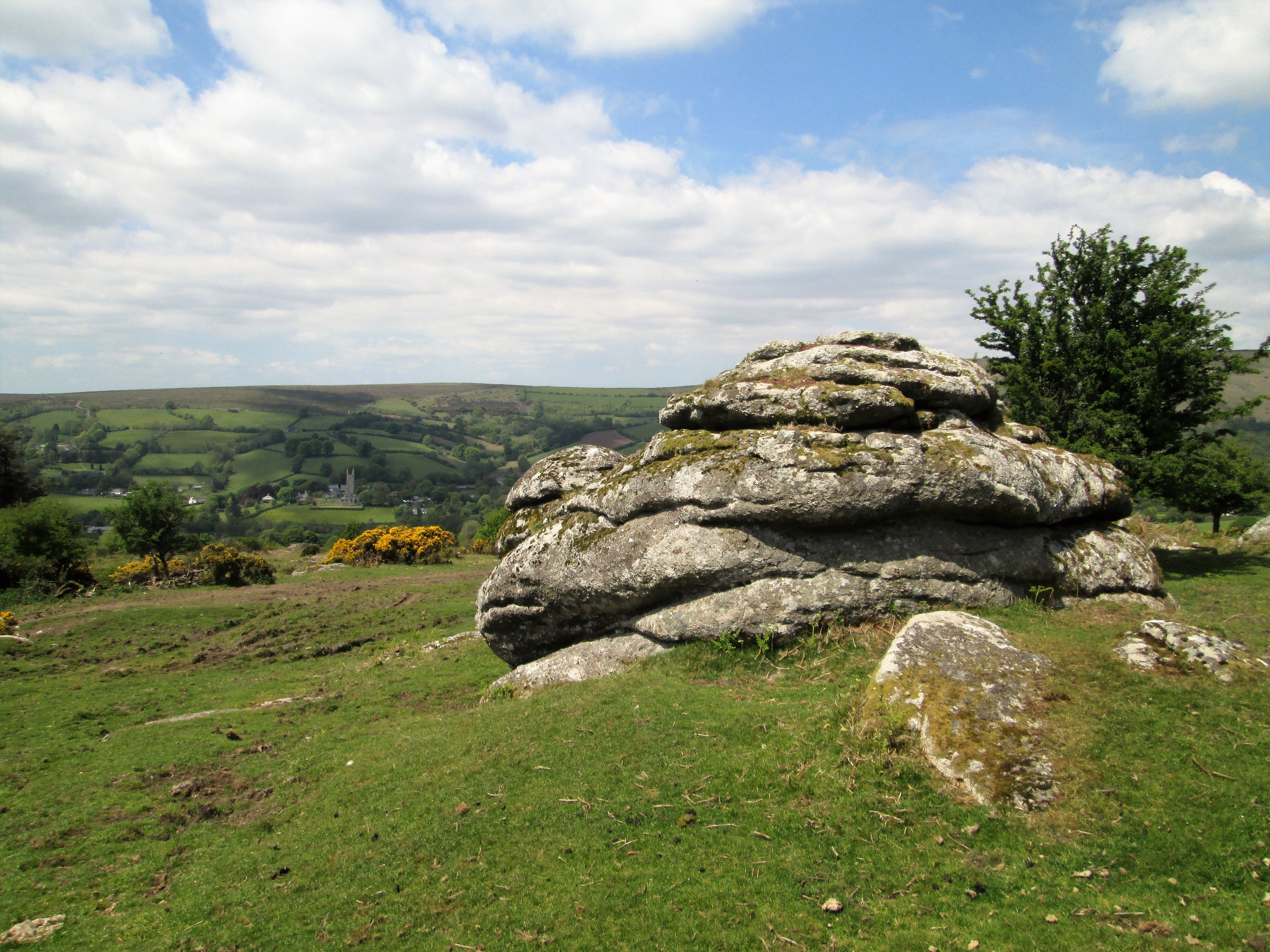
Whilst understanding this sentiment entirely and certainly echoing the need to get out and experience the moor, Hemery’s decision to omit GRs has nonetheless led to some confusion over the exact location of the some of the places and features that he describes. One such enigma is Bovey Rock on Widecombe Hill a feature that is described by the author on page 656, after leaving what he identifies as ‘the remarkably rugged’ Bonehill Rocks he explains ‘The pile next southward on the high valley side, which here is known as ‘Tor Hill’ is Bovey Rock a small, shapely one standing near the south side of Widecombe Hill- that is the road (to White Gate and Bovey Tracey) coming up from Widecombe.’ Hemery goes on ‘Above Bovey Rock and significant by position rather than size is Top Tor’. So, from all of this we do at least get a rough idea where Bovey Rock can be found and what it might look like, but it is not straightforward.
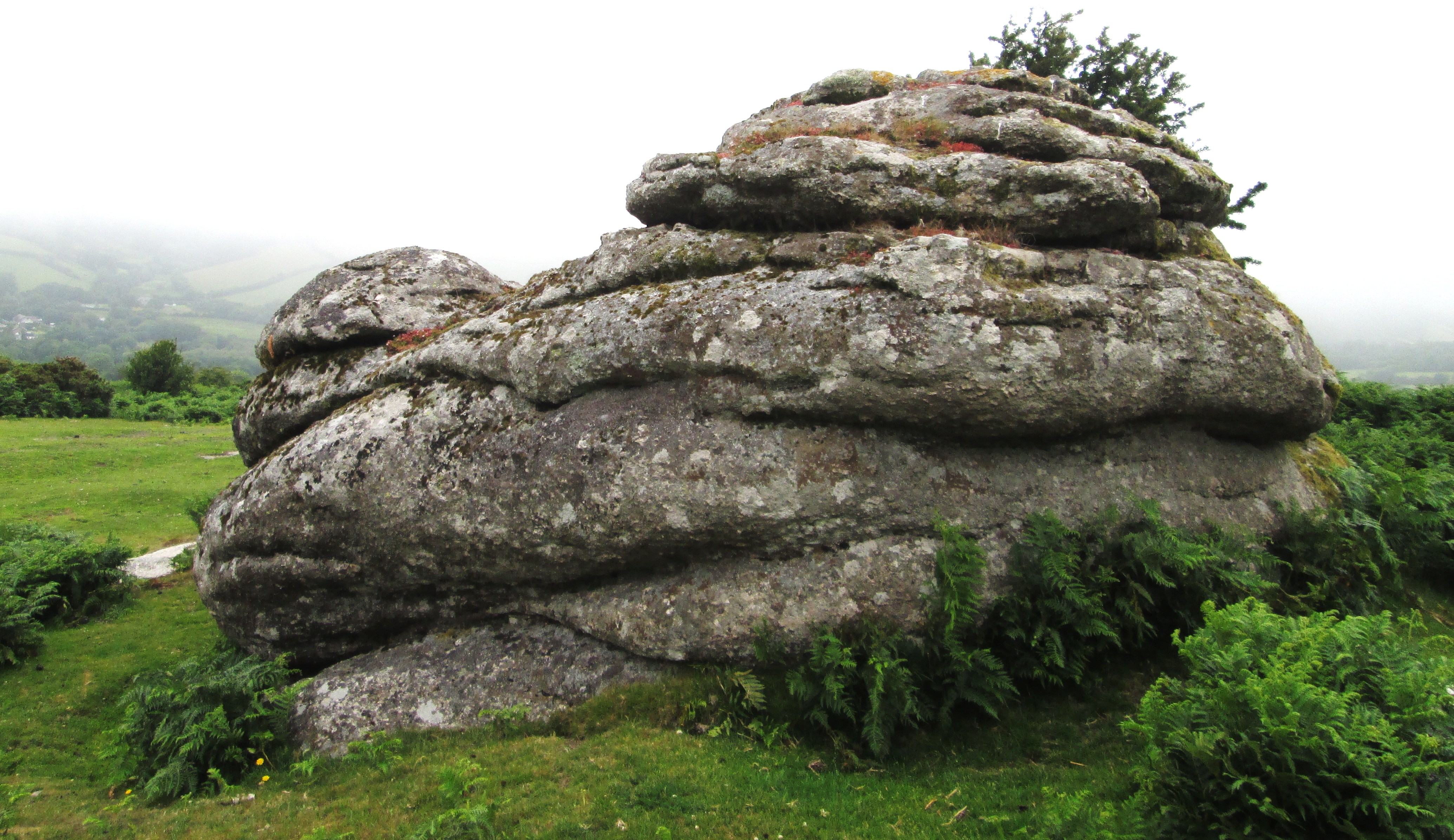
As this seems to have been the first appearance of that name in the literature and there is no real explanation as to its origin apart from the reference to the road to Bovey Tracey coupled with the lack of a GR to help with finding it, subsequent interpretations as to the whereabouts of the Rock have understandably led to misunderstandings regarding both its appearance and location. Indeed one of the first to attempt to unravel this mystery was Mike Brown (1995) who gives a GR of SX 7338 7668 for the Rock, a position which has led many to assume that it is the rather scruffy small tor of jumbled blocks and boulders that is set below and to the north west of Top Tor proper. However, that pile is neither ‘shapely’ nor near the road and actually has a GR of SX 7342 7653. More recently Ringwood (2013 p38) has also opted for this site having overlooked Hemery’s earlier description. The rocks at this point are more of a northern outlier of Top Tor and are seemingly identified as such by Hemery ‘The lower side of the north-west pile is utterly decayed its residue like debris in a quarry tip.’ This appearance is certainly in keeping with the small tor here.
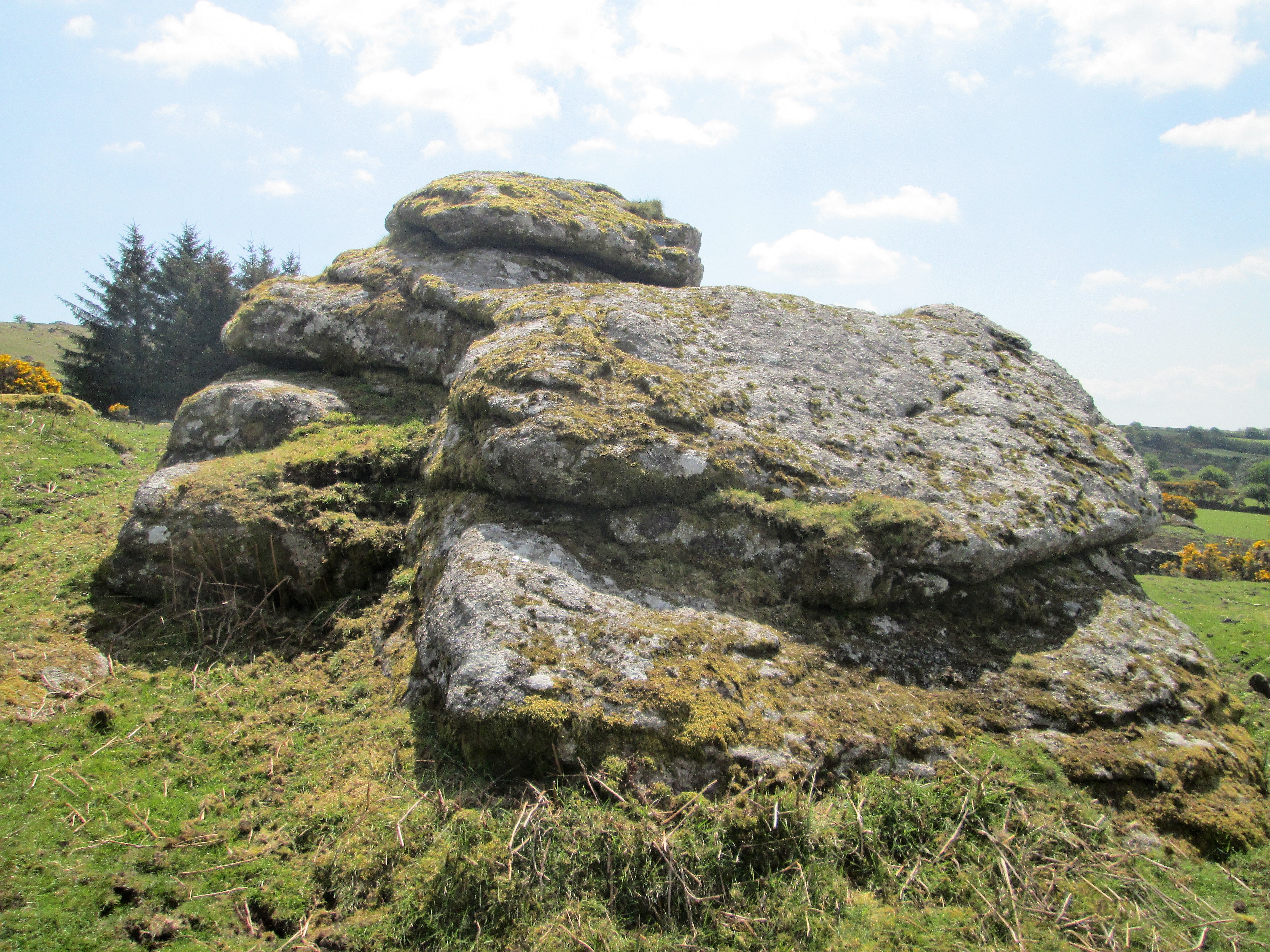
So in light of the evidence on offer and having extensively explored the area in search of the elusive Rock, I am now in a position to suggest a much better contender that can be found near the track to Torcroft at SX 7299 7667. This is a fine compact rounded outcrop which is altogether much shapelier and certainly nearer the road just as Hemery describes. It immediately has much better appeal than the rather ragged rocks on high and is also due south of Bonehill Rocks further complementing the author’s commentary. From here there are some excellent views downhill to the ‘Cathedral of the Moor’ namely St Pancras Church at Widecombe village. More sizeable chunks of granite are strewn on the slopes below the Rock and uphill we see on the horizon what I now consider to be the mistaken rocks of what could be dubbed Lower Top Tor, some 300 metres or so away to the south east.
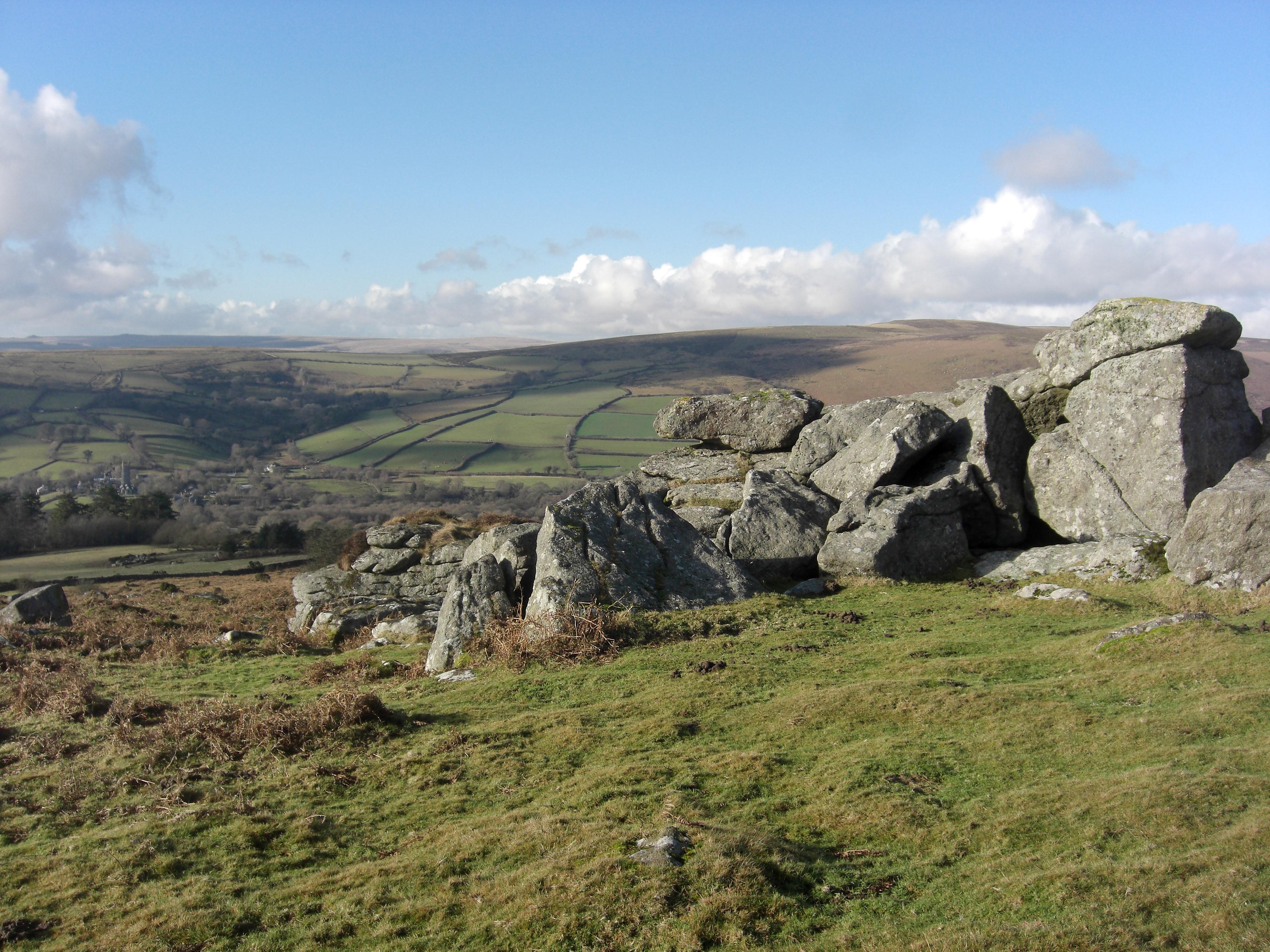
Eric Hemery most notably omitted GRs from his tome High Dartmoor and whilst respecting his reasons for this the decision to do so has inadvertently led to some confusion over the exact location of several places, buildings, artefacts, rocks and tors that he refers to, especially where he has introduced previously unrecorded names for features. He notes on page 5 that ‘It would be uneconomical to reproduce portions of standard maps to accompany the text as many features are unmarked and some even on OS maps incorrectly marked’ and indeed any reader of his work will soon realise that a good number of the features he describes in the text are not actually shown on popular maps. At times that can leave the reader wondering as to where exactly the author is and what he is seeing. In some instances only the most ardent Dartmoor explorer would ever be motivated to retrace his steps. The confusion over the location of Bovey Rock is perhaps a good example of that, illustrating the difficulties that are sometimes associated with failing to use even approximate six figure GRs to help identify features. At least for now it is hoped that the true position and appearance of the Rock on Widecombe Hill has been resolved.
References:
Brown M (1995) The Gazetteer of Dartmoor Names Forest Publishing
Hemery E (1983) High Dartmoor Land and People Robert Hale London
Ringwood K (2013) Dartmoor’s Tors and Rocks University of Plymouth Press

